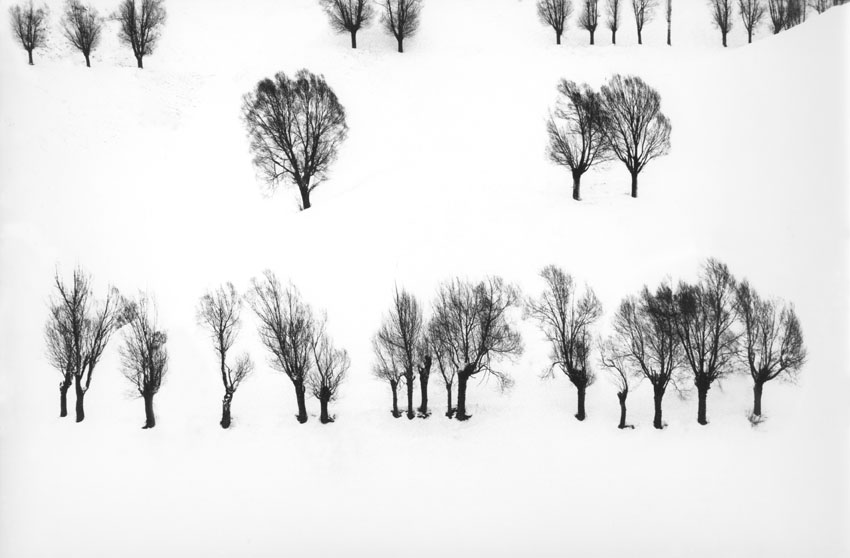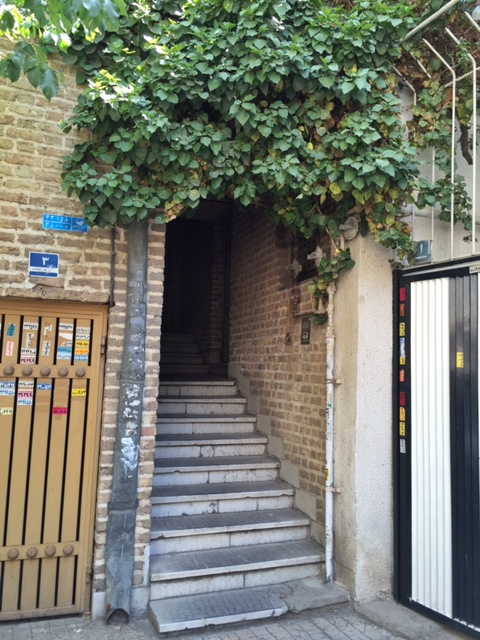We chose not to be photographed. His broad smile was somewhat subdued, though the impishness of his chuckle still remained. The big hug didn’t work out. Even in the generous light through the large open window, a frail Kiarostami with tubes wasn’t how we wanted him depicted. He had cancer, and the surgery had gone wrong. My young friend Mansour Kiaei had accompanied me and had only met the great man for the first time. He wanted to photograph the two of us. We declined, saving the moment, for when Abbas would be better, and more the Abbas, as I had known him.

It was a delicate and elegant set of silhouettes against the snow that first caught my eye in a gallery in Paris. My knowledge of film being limited, I hadn’t at that time known that the author was a great filmmaker. Later, when I was commissioned to curate for the book ‘Blink’ by Phaidon, Abbas Kiarostami was one of my nominated photographers. It didn’t work out. The negotiations between the gallery and the publisher, simply took too long and we were coming up against a deadline, but while publishers and galleries quibbled over transactional details, the two of us became friends. Later, when I was in Tehran for a show at the Tehran Museum of Contemporary Arts, we met for the first time in his home in North East Tehran. Since then, we’ve shared books and stories, and every time I’ve been in Tehran, assuming he too was there in between his many film related travels, we would catch up on all that we had done and laugh at life.
I had tried to get him across to our festival Chobi Mela several times. He was hesitant, saying his English was not up to speed. Language had never been an issue on the many hours we had spent together. Despite his stature as a filmmaker, he was quite shy, and while expansive and argumentative in our moments together, he was self-conscious when it came to public engagements.
June 2016 had been a crazy month, with two trips to the UK, one to Tanzania and another to Iran to fit in. But the Iran trip at the end of the month had an added incentive. Besides friends related to the TV programme and film I was involved in, it was also a chance to meet up with other old friends. Neither Shadi Ghadirian nor Rana Javadi were in town. Abbas Kiarostami strangely, had not responded. He didn’t answer the phone when I rang, and there was no answer to the email. But then someone rang Mansour to ask if I could come over the next morning. It was only when we met that I realised how ill he was. Visitors were forbidden. While he never mentioned it, seeing me must have taken a special effort. I tried asking him not to speak, content just to be by his bedside, but though speaking was difficult, he wanted to talk, and we drifted into old times. I mentioned Chobi Mela, and with a wry smile he said, “These are the times when you reflect on the many things you never got round to in your life. Coming to see you in Dhaka is one of them.”
I had taken a copy of our new book on Muslin, the fabled Bengal fabric. He insisted on going through it. I turned the pages one by one, going briefly over the contents, wanting to stop, as I knew it was an effort for him. But he wanted me to go on. This was one way we could continue being together. For once, we didn’t talk politics or photography, or film, but small things, personal things. Things that needed to be said. I did stop at one stage, had a cherry and an apricot from the large bowls of fruit that always greets a visitor to an Iranian home. Then it was time to say goodbye. A weak hand held me close as I kissed him on the forehead. The eyes followed as I walked through the door.

As we left the house, I took a photo of the empty doorway. On another day, this is where Abbas would have been standing and we’d have shared one last hug.
Dhaka
5th July 2016
